Tim Blackmore
Detecting Stimuli with Novel Temporal Patterns to Accelerate Functional Coverage Closure
Jun 19, 2024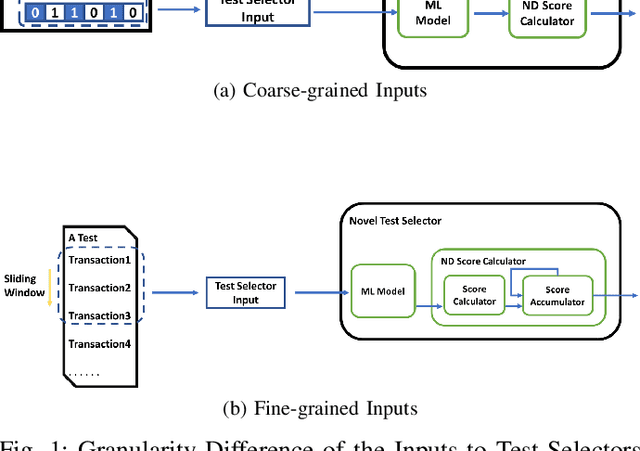
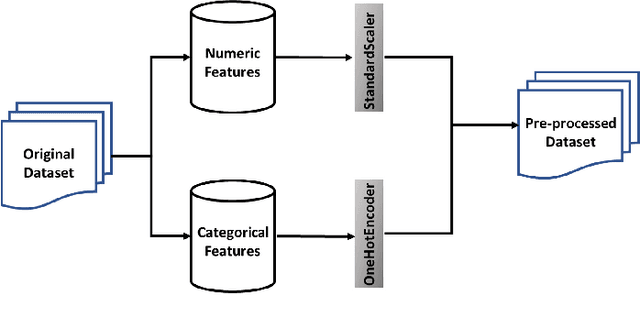
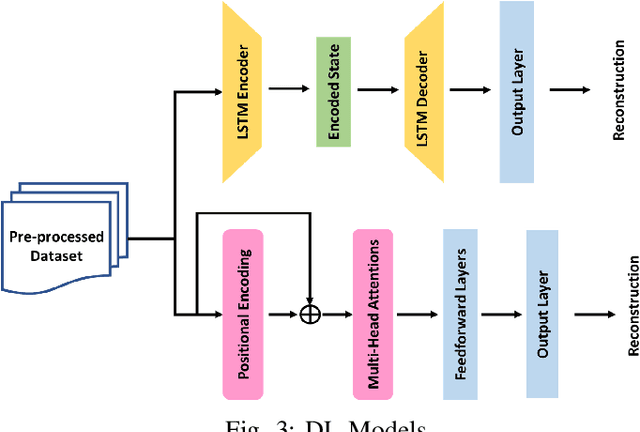
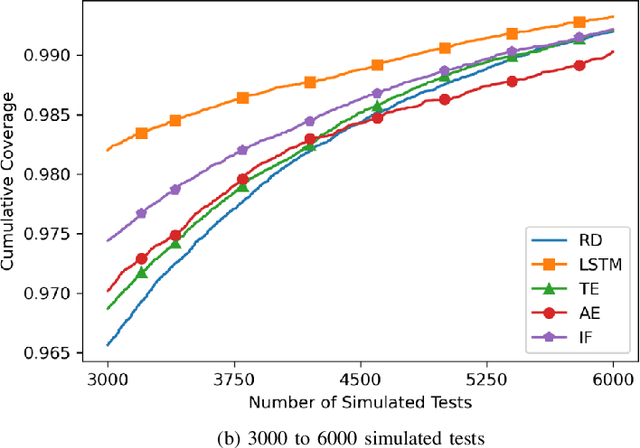
Abstract:Novel test selectors have demonstrated their effectiveness in accelerating the closure of functional coverage for various industrial digital designs in simulation-based verification. The primary advantages of these test selectors include performance that is not impacted by coverage holes, straightforward implementation, and relatively low computational expense. However, the detection of stimuli with novel temporal patterns remains largely unexplored. This paper introduces two novel test selectors designed to identify such stimuli. The experiments reveal that both test selectors can accelerate the functional coverage for a commercial bus bridge, compared to random test selection. Specifically, one selector achieves a 26.9\% reduction in the number of simulated tests required to reach 98.5\% coverage, outperforming the savings achieved by two previously published test selectors by factors of 13 and 2.68, respectively.
Using Neural Networks for Novelty-based Test Selection to Accelerate Functional Coverage Closure
Jul 07, 2022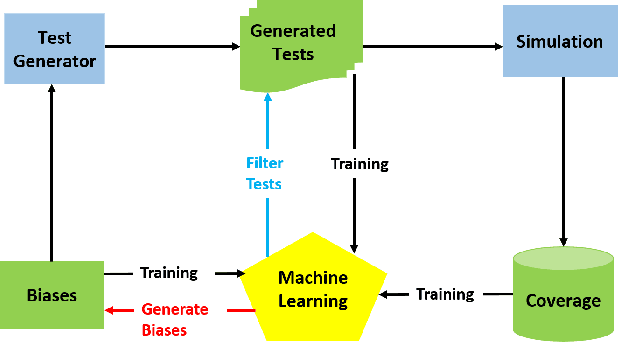
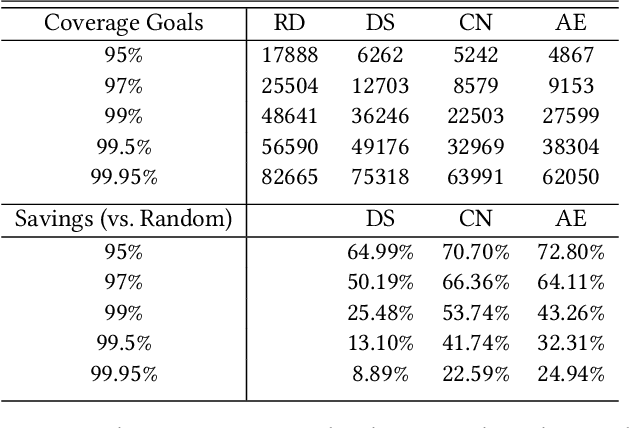

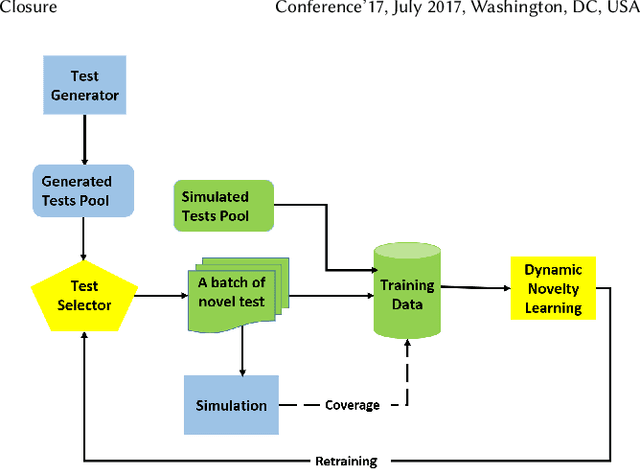
Abstract:Machine learning (ML) has been used to accelerate the closure of functional coverage in simulation-based verification. A supervised ML algorithm, as a prevalent option in the previous work, is used to bias the test generation or filter the generated tests. However, for missing coverage events, these algorithms lack the positive examples to learn from in the training phase. Therefore, the tests generated or filtered by the algorithms cannot effectively fill the coverage holes. This is more severe when verifying large-scale design because the coverage space is larger and the functionalities are more complex. This paper presents a configurable framework of test selection based on neural networks (NN), which can achieve a similar coverage gain as random simulation with far less simulation effort under three configurations of the framework. Moreover, the performance of the framework is not limited by the number of coverage events being hit. A commercial signal processing unit is used in the experiment to demonstrate the effectiveness of the framework. Compared to the random simulation, the framework can reduce up to 53.74% of simulation time to reach 99% coverage level.
Hybrid Intelligent Testing in Simulation-Based Verification
May 19, 2022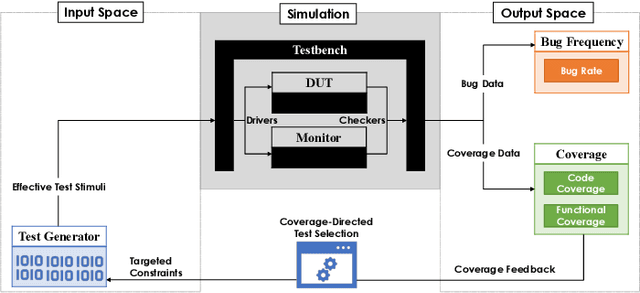
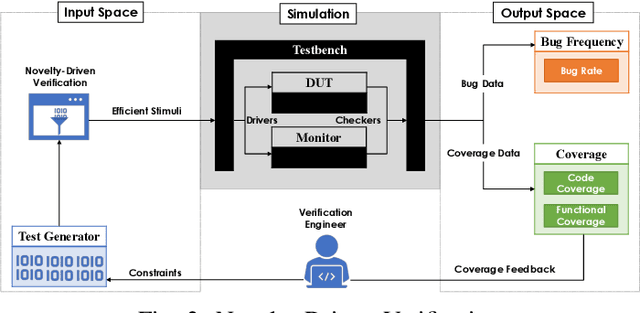

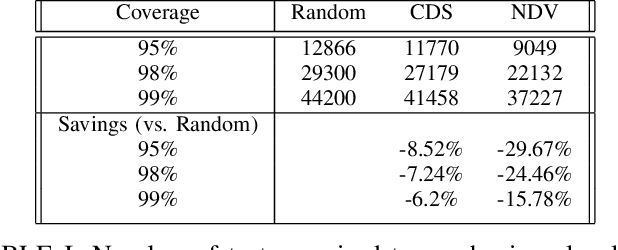
Abstract:Efficient and effective testing for simulation-based hardware verification is challenging. Using constrained random test generation, several millions of tests may be required to achieve coverage goals. The vast majority of tests do not contribute to coverage progress, yet they consume verification resources. In this paper, we propose a hybrid intelligent testing approach combining two methods that have previously been treated separately, namely Coverage-Directed Test Selection and Novelty-Driven Verification. Coverage-Directed Test Selection learns from coverage feedback to bias testing towards the most effective tests. Novelty-Driven Verification learns to identify and simulate stimuli that differ from previous stimuli, thereby reducing the number of simulations and increasing testing efficiency. We discuss the strengths and limitations of each method, and we show how our approach addresses each method's limitations, leading to hardware testing that is both efficient and effective.
Supervised Learning for Coverage-Directed Test Selection in Simulation-Based Verification
May 17, 2022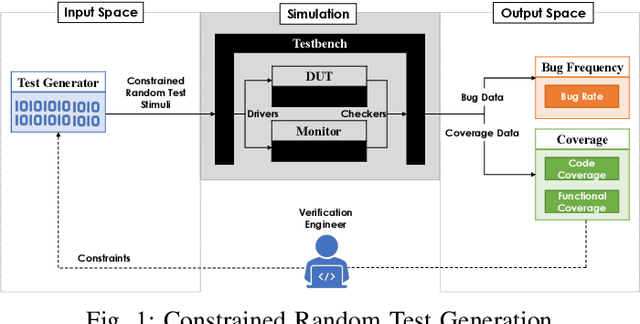

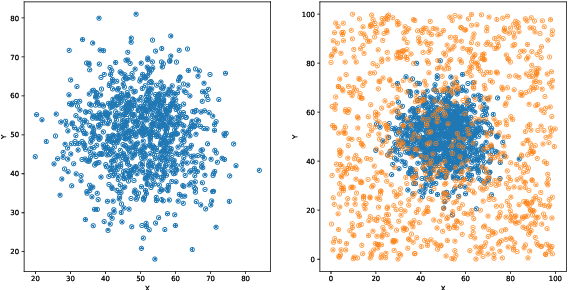
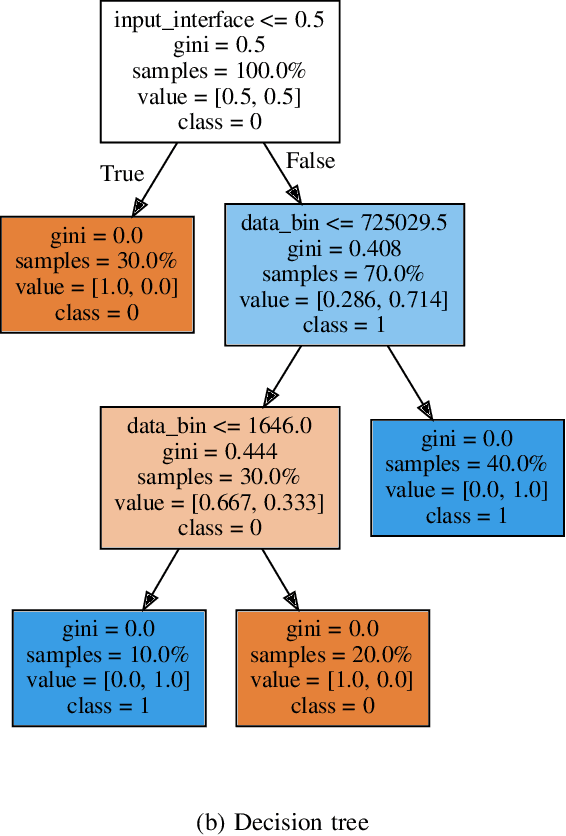
Abstract:Constrained random test generation is one the most widely adopted methods for generating stimuli for simulation-based verification. Randomness leads to test diversity, but tests tend to repeatedly exercise the same design logic. Constraints are written (typically manually) to bias random tests towards interesting, hard-to-reach, and yet-untested logic. However, as verification progresses, most constrained random tests yield little to no effect on functional coverage. If stimuli generation consumes significantly less resources than simulation, then a better approach involves randomly generating a large number tests, selecting the most effective subset, and only simulating that subset. In this paper, we introduce a novel method for automatic constraint extraction and test selection. This method, which we call coverage-directed test selection, is based on supervised learning from coverage feedback. Our method biases selection towards tests that have a high probability of increasing functional coverage, and prioritises them for simulation. We show how coverage-directed test selection can reduce manual constraint writing, prioritise effective tests, reduce verification resource consumption, and accelerate coverage closure on a large, real-life industrial hardware design.
 Add to Chrome
Add to Chrome Add to Firefox
Add to Firefox Add to Edge
Add to Edge